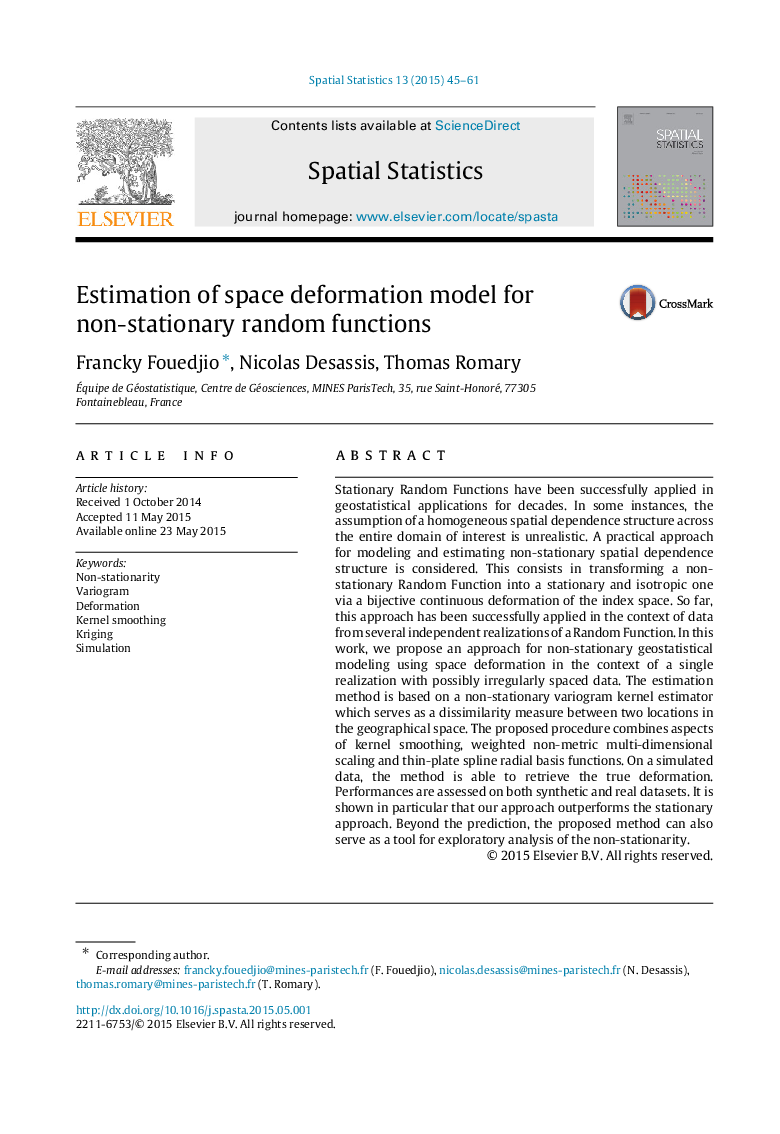| Article ID | Journal | Published Year | Pages | File Type |
|---|---|---|---|---|
| 1064537 | Spatial Statistics | 2015 | 17 Pages |
Stationary Random Functions have been successfully applied in geostatistical applications for decades. In some instances, the assumption of a homogeneous spatial dependence structure across the entire domain of interest is unrealistic. A practical approach for modeling and estimating non-stationary spatial dependence structure is considered. This consists in transforming a non-stationary Random Function into a stationary and isotropic one via a bijective continuous deformation of the index space. So far, this approach has been successfully applied in the context of data from several independent realizations of a Random Function. In this work, we propose an approach for non-stationary geostatistical modeling using space deformation in the context of a single realization with possibly irregularly spaced data. The estimation method is based on a non-stationary variogram kernel estimator which serves as a dissimilarity measure between two locations in the geographical space. The proposed procedure combines aspects of kernel smoothing, weighted non-metric multi-dimensional scaling and thin-plate spline radial basis functions. On a simulated data, the method is able to retrieve the true deformation. Performances are assessed on both synthetic and real datasets. It is shown in particular that our approach outperforms the stationary approach. Beyond the prediction, the proposed method can also serve as a tool for exploratory analysis of the non-stationarity.
